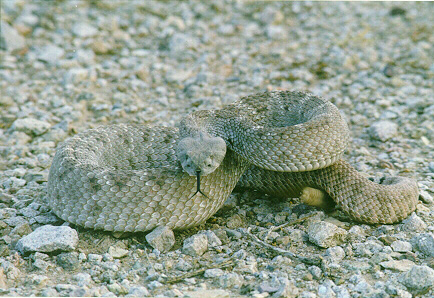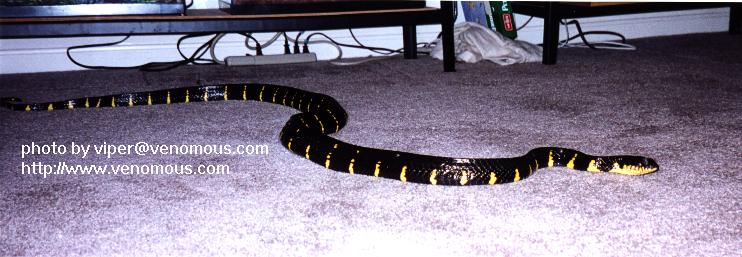|
      
| Pit Vipers
Pit vipers, which aren’t really vipers, get their name
from the depressions by the side of it’s mouth. These depressions, called pits, let
them sense the heat of their prey. The pits also regulate how much venom the snake injects
into its prey. An example of a common pit viper is a rattlesnake. |
 |
 |
King Cobra
The King Cobra, which is the largest
venomous snake in the world, can grow up to 6 meters in length. If it is threaten, it
swings its head up into strike position and flattens out its neck to form a hood. This
makes it look much larger and scarier.
Many people have heard of snake charmers
making King Cobras dance with enchanting music. Snake charmers actually can
make the cobra seem to dance, but it has nothing to do with the music. The waving motion
of the charmers flute. A King Cobra is deaf. |
| Mangrove Snake
This snake is more commonly known as
the cat snake because it has a pupil which resembles that of a cat's eye. The Mangrove
Snake can have up to 45 yellow bars from head to tail. These are only bars because they
don't circle the entire body of the snake. The Mangrove Snake can be found in forests and
in "mangroves". They can grow up to 2.5 meters long. The Mangrove Snake's diet
consists mainly of small reptiles and amphibians. |

|
|
